‘Them’ is a horror-drama anthology series on Amazon Prime by first-time writer and creator Little Marvin. Season 1 of the series takes place in the 1950s during the Great Migration and follows a Black family as they move into an all-white neighborhood in California. The Emory family is soon haunted by murderous spirits in their house and by equally malevolent racist neighbors who seem to stop at nothing to get them to move away.
Terrorized from all directions, the family spirals out of control as ghosts of their own darkness begin to take over. Last seen standing inside a ring of fire, what happens to the Emory family next? If the ending of ‘Them’ season 1 has left you with questions, you’ve come to the right place. SPOILERS AHEAD.
Them Season 1 Recap
‘Them’ starts with the Emory family moving to their new home in East Compton, California, where Henry Emory has got a job as an engineer, something still rare for an African American at the time. The neighbors, especially Betty Wendell, who lives across the street, are horrified at the prospect of sharing their neighborhood with a black family and immediately begin to protest, collecting outside the Emory house at all hours of the day and night.
Henry’s wife, Lucky, already wary of white people for reasons yet unknown, reacts violently and even threatens one of the neighbors with a gun. In the meantime, their youngest daughter Gracie starts encountering an old lady in the house who she says smells very, very bad. As the family faces immense pressure from their hostile neighbors and the forces within their house, cracks begin to show, and we find out that both Henry and Lucky have traumatic pasts that weigh on them heavily.
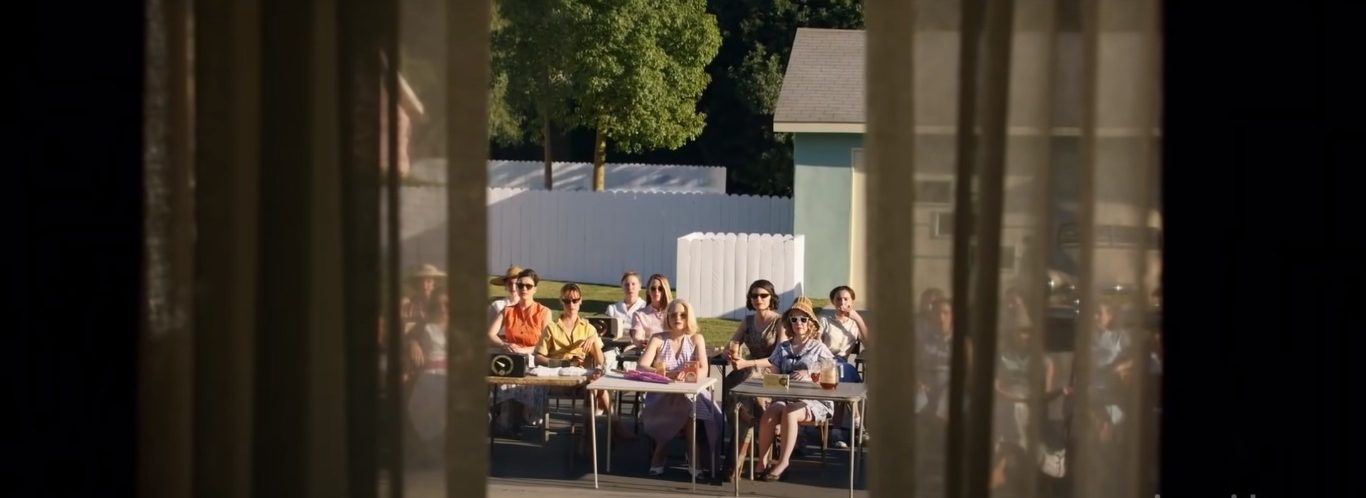
In Henry’s case, it is his part as a soldier in World War 2 that haunts him, and he is shown to have suffered from acute post-traumatic stress in the past. Lucky was raped and watched her baby son Chester get murdered by white people. The two also share the intense trauma of having lived through the death of their son and being helpless in avoiding it.
The daughters, Ruby and Gracie, face ridicule at their new schools as well and play host to their own spirits that get them to commit atrocious and disturbing acts. Ruby imagines a blonde girl with blue eyes at school who repeatedly calls her pretty. Gracie is haunted by a character, Ms. Vera, from a book she keeps reading and says she wants to be like the latter when she grows up.
As the Emorys deal with their ghosts and try to come to grips with all that is happening around them, Betty gets increasingly desperate for them to leave. She panics further when she realizes that some of her neighbors are already planning to move and fears that the value of her house will plummet once more Black families move into the street.
After a final confrontation with Lucky, who slaps her, Betty loses control and goes to George, the milkman, who claims to be a man of action and has offered to do her a favor. Henry, too loses control and shoots a condescending policeman. With Betty gone, the neighbors begin to suspect the Emory family. As the family tries to leave the house to get away, Henry notices a box amongst their packed suitcases and opens it to find the corpse of their dead son.
Them Season 1 Ending: Does the Emory Family Leave Compton?
After admitting to carrying around their baby son’s corpse with her, Lucky is admitted to a mental institution, where most of the patients seem to be lobotomized, and is denied contact with her family. Betty is kept imprisoned by George the milkman, who has an unhealthy obsession with her. Henry and his daughters, meanwhile, are ambushed in their house by two of their neighbors who claim to be looking for Betty but also just want to hurt the Emory’s.
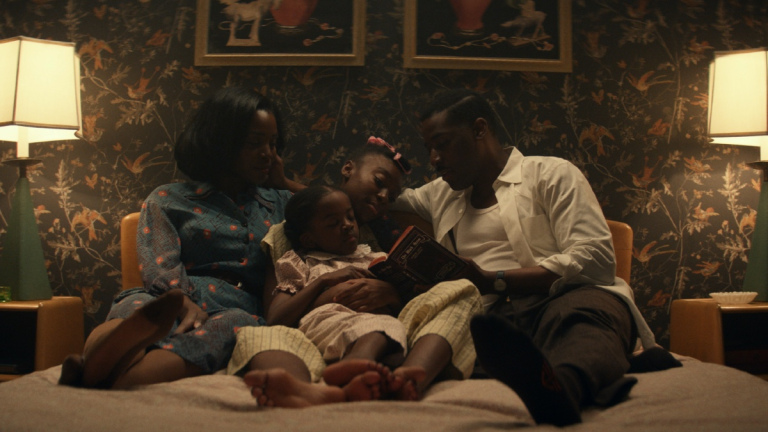
As the climax of the season finale builds, Lucky escapes from the mental institution after possibly killing the sadistic doctor. Henry, who is being lynched by his neighbors in the basement of his own home, is helped by Ruby and manages to overpower them. He beats one of them up in the middle of the street with the rest of the neighborhood watching. As all the neighbors begin to close in, chanting racist slurs against the family, Lucky screams, causing a ring of fire to burst out from their front yard, which protects the Emorys and keeps the mob at bay.
As each member of the Emory family comes to terms with their ghosts, Lucky goes to the basement to confront the priest in the black hat, who has haunted their family the longest. He asks her what she will do when she realizes that she and her family are “cursed” forever. Lucky replies by saying that the priest had blinded them all, but now she sees him.
The priest’s eyes slowly turn a milky hue, and he eventually bursts into flames, leaving the Emory’s reunited and standing in their front yard looking determined, surrounded by a ring of fire and the angry neighborhood mob. As tense an ending as any, the season finale is satisfying and cathartic. But it leaves us with many questions, the most burning of which is if the Emory family continues to live in Compton, given all that’s occurred? And the surprising answer is, most likely, yes!
Throughout season 1, we see the family fight to make a place for themselves in the predominantly white environment they suddenly find themselves in. In their neighborhood, at Henry’s work, and even at the girls’ schools, they are constantly subjected to ridicule and treated unfairly. But we see them persevere, finding strength in each other when the rest of the world seems to be against them. Right at the start, when they first move to Compton and are faced by bigoted neighbors, Henry says to a panicking Lucky that they are not going to run anymore.
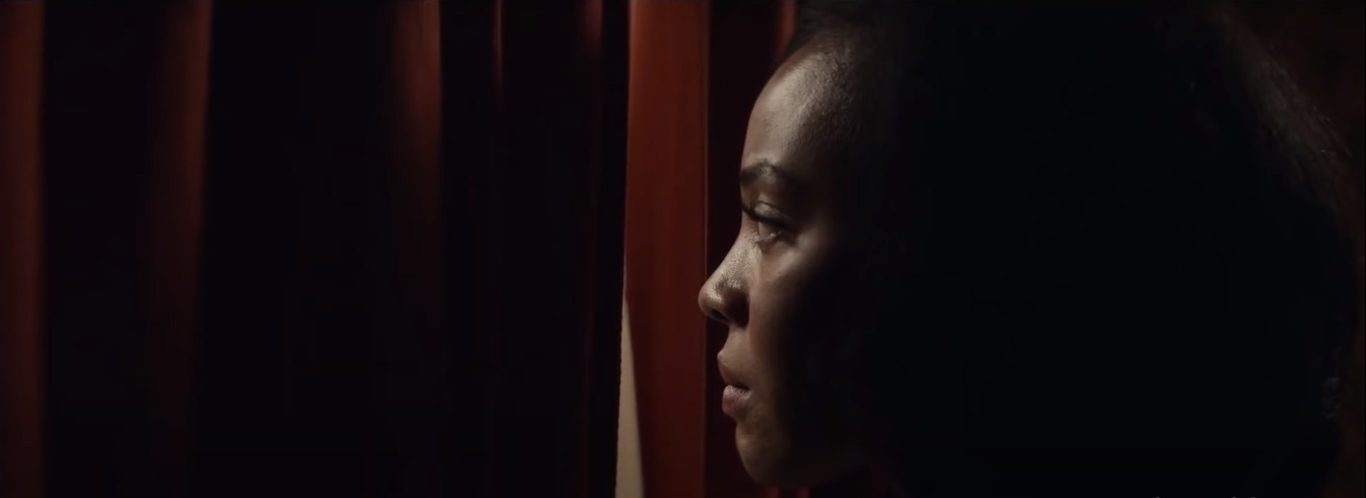
This is seen throughout the rest of the show as all four members of the family take stands against the forces terrorizing them, and, in the finale, the phrase about not running away is repeated. This emphasizes the fact that the family is adamant about staying where they are, despite the obvious hurdles they will face by staying in Compton.
In the end, when, having dealt with the ghosts of their past, we see them standing outside their house looking determined, it is further emphasized that they are not going anywhere. Of course, Henry’s murder of the policeman and Lucky assaulting the orderly and doctor at the mental institution continue to linger as possible threats to the family’s freedom, as do their sadistic neighbors.
But given that they are now united, it seems like a “cross that bridge when they get to it” situation, with the family persevering to stay where they are and not leave Compton. It is further interesting to note that given the accurate historical context of the show, the town where it is based, Compton, eventually became a largely African American locale and is iconic in popular culture today. So symbolically, too, the Emory family does not leave the neighborhood.
What is the Emory Family Haunted By?
The Emory family is inundated by malevolent forces from multiple directions throughout the show. Their racist and often sadistic neighbors notwithstanding, the most obvious element haunting the family is the memory of their youngest member, Chester, who was brutally killed by white people as a baby. Lucky is unable to let him go.
She confirms this when the baby’s corpse is discovered and hides the box containing his remains in the basement. We see their most persistent tormentor, the priest in the black hat, originate from the same spot in the basement where Chester’s body is hidden. The decaying priest symbolizes the inherent fears brought on by being victims of racism that the family struggles to confront.
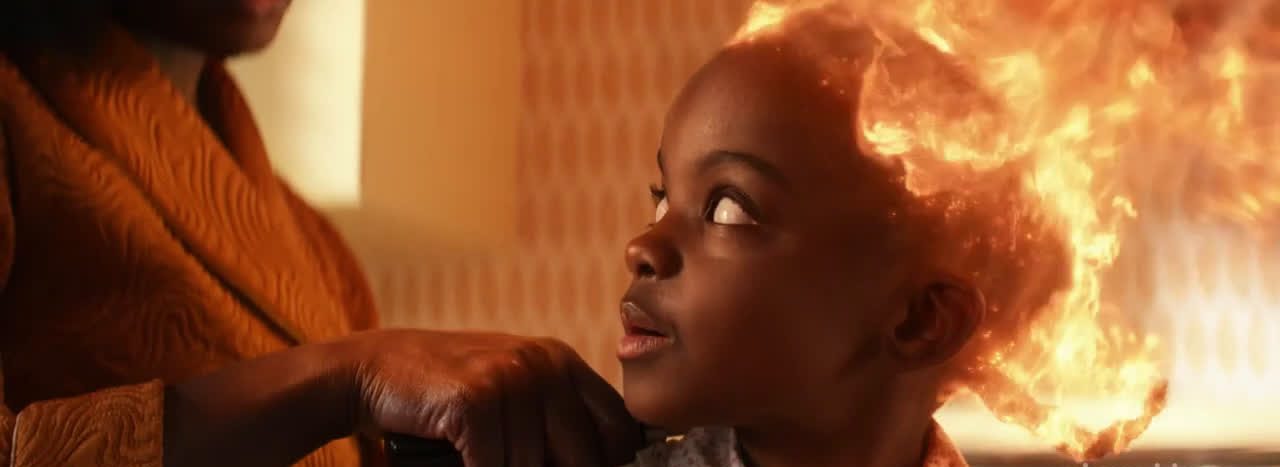
The Emory family is also haunted by ghosts who signify various fears and desires that the characters have. The common thread, however, between all their tormentors is that they stem from the traumatic experience that African Americans faced whilst integrating into a suburban society around the 1950s. The idea of nothing ever changing or improving, of racism remaining an inherent part of society, is alluded to multiple times and haunts the characters constantly.
Who Are the Different Ghosts That Haunt the Family?
Each member of the family is haunted by separate ghosts comprised of their deepest unspoken fears and desires. These ghosts have an almost schizophrenic effect on their victims, appearing to them as real and making them do outlandish and disturbing things without realizing it. Henry is haunted by a dark, taunting man in blackface who crops up whenever Henry feels helpless in the face of exploitation. His ghost constantly reminds him of how he wasn’t able to save his wife and son whilst they were being attacked.
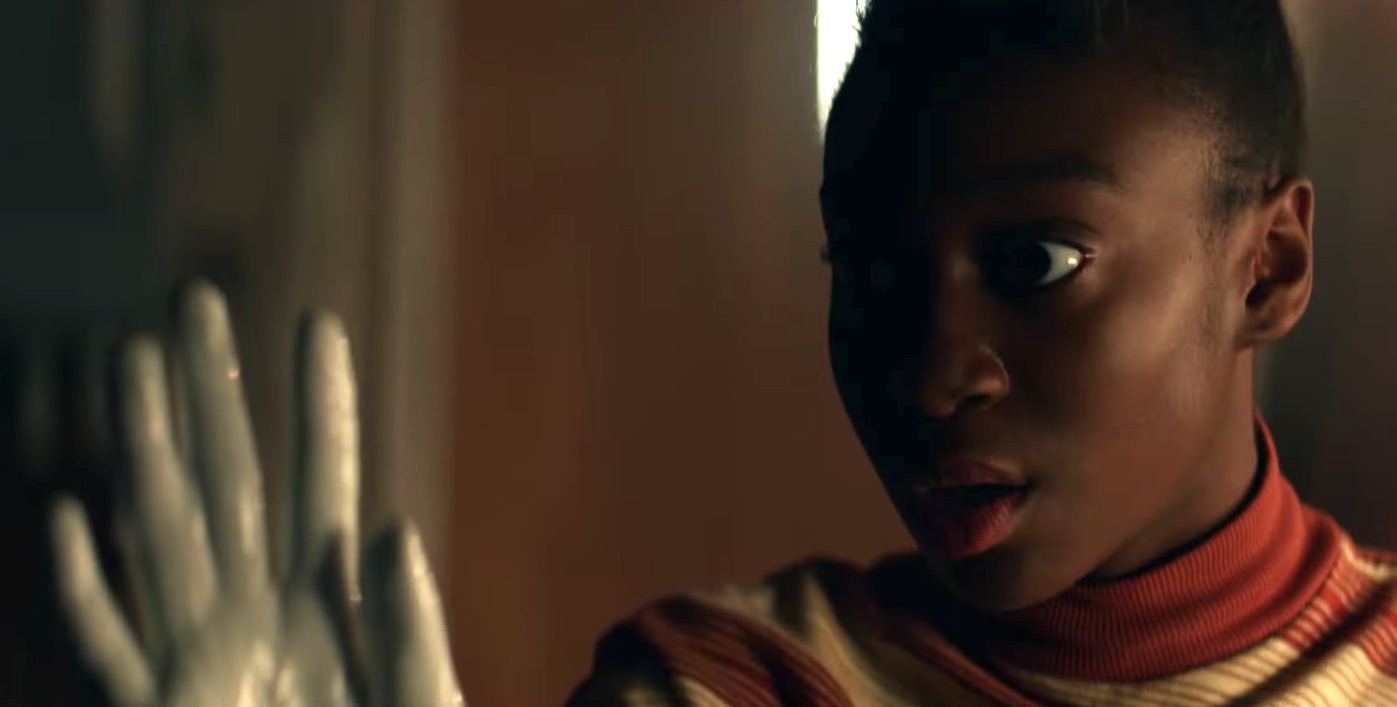
Ruby has a deep unspoken desire to be accepted, for which she thinks she needs to be white. Her ghost takes the form of Doris, a pretty blonde girl in her school who repeatedly compliments Ruby’s beauty and even starts turning Ruby’s features caucasian. Her younger sister Gracie is given instructions by a bad-smelling figure who resembles a character from one of her books that Gracie idolizes. Both Gracie and her mother Lucky also encounter the priest in the black hat, who embodies the long-standing racism seen in the town of Compton.
The insidious priest’s origin stretches back many decades to when he blinded and burnt a helpless African American couple on the same patch of land that the Emory house is now built on. It is noteworthy that the ghosts featured are always shown as decaying bodies, most likely signifying the festering internal trauma of the family and the rot of racism at the heart of society. These are themes that show creator Little Marvin expressed as wanting to explore on the show.
Who is the Priest in the Black Hat?
The priest in the black hat who first starts haunting the family soon after they move into Compton is a character who committed atrocious murders motivated by racism many decades earlier. As explored in the episode that delves into his origin story, the priest believed that he could communicate with God and eventually convinced himself that God had ordered him to “cleanse” the world by destroying the black community.
As we find out later, the priest had been listening to the Devil instead, who was disguised as a young boy. We see them make a deal with promises of great power should the priest succeed in causing as much pain as possible to African Americans. The priest, who acts self-righteous in thinking he’s doing the lord’s work, ends up destroying his own community when it bursts into flames after he kills the helpless black couple. The character is a symbol of systemic racism and is finally destroyed when Lucky tells him that she is no longer blind and can see him, exposing his weakness.
Where Does the Ring of Fire Around The Emory House Come From?
As Lucky walks towards her home after escaping from the mental asylum, she has a determined look that seems to suggest that she has now given up any hope of finding justice or equality and realizes that she must stand up against the forces tormenting her family. We see her silence the neighbors and even vanquish the insidious priest whilst the fire around their house keeps burning. In one of the flashbacks, we see something similar happen when the pregnant African American woman curses the priest and his community just before they burn her.
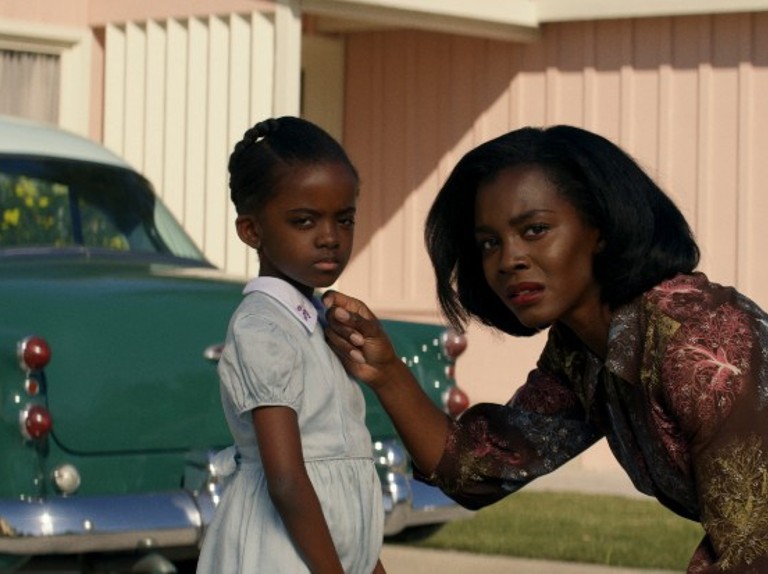
In that instance, the room she is in, and subsequently the rest of the community town, burst into flames. The flames seen outside the Emory house in the finale are possibly borne out of the same energy and passion that Lucky now feels and seem to symbolize the undying spirit of the black community that refuses to be extinguished. The flames also likely serve as a warning of retribution to the bigoted neighbors if they continue to torment the family.
Why Does George the Milkman Kill Betty?
George the milkman is a close supporter of Betty’s cause for most of the show, and the two spend a lot of time discussing how to eject the Emory family from the neighborhood. Promising to be a man of action, George offers to help Betty, and she takes him up on the offer, only to be drugged and kept hostage by him. It is revealed that George has an unhealthy obsession with Betty and keeps her locked in an underground silo, thinking the two can have a happy life together. When Betty stabs him and tries to escape, he shoots her with no hesitation.
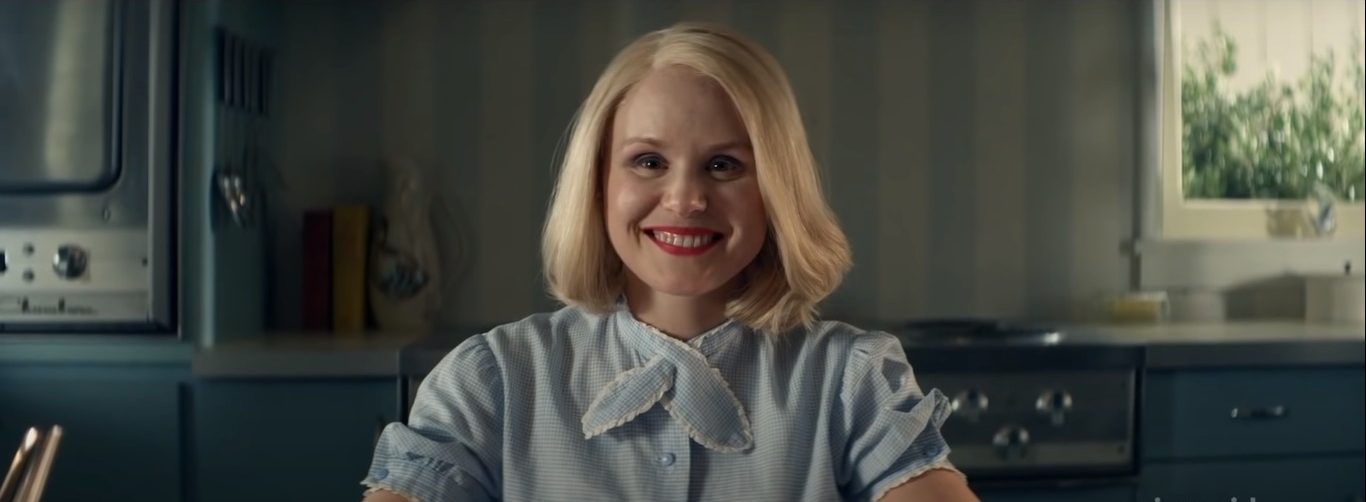
George’s character is an ironic one and highlights the neighborhood residents’ blindness to the real villain hiding amongst them. Whilst they all suspect the Emorys for Betty’s disappearance and blame them for ruining the neighborhood, it is their trustee milkman who has murdered a member of their community. The milkman murdering Betty is one of many, but most blatant, forms of racist hypocrisy highlighted in the show.
Read More: Is Them Based on a True Story?


You must be logged in to post a comment.